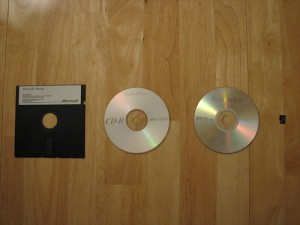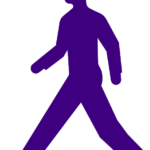
Doesn’t every elder’s story about the past begin, “When I was your age…”?
It’s not the age of your body but the age of your bankruptcy practice and the state of the practice in general that interests me today. I literally fell into bankruptcy law; the lawyer in the office next to mine not only offered me a bankruptcy case (when I had few cases ) but offered to teach me how to handle it.
That was 1980.
My my, how the bankruptcy world has changed. For example:
- The Bankruptcy Code has matured. In 1978, the Code replaced the Act. Many aspects of the new code were virgin territory. We hung on every appellate decision that came out that shed some light on the multitude of questions we had on how this is supposed to work. Sound familiar?
- The internet has accelerated the dissemination of decisions and developments. News spreads instantly about a ground breaking decision at virtually no cost to the bar. We can see trends, adopt arguments.
- The bench has reached out to the bar to improve the practice. More than when I began, the bench is involved in developing local forms, conducting training sessions, actively involving itself in raising the standard of practice.
- The quality of consumer bankruptcy practitioners is markedly better. Consumer bankruptcy lawyers were not the best lawyers on the block in 1980 or even 1990. The reward was slim and there was little drive to collaborate to all become better lawyers.
- NACBA was created. And then came a coterie of consumer bankruptcy attorneys in San Jose who created a national organization to help us band together to advocate for our clients and strengthen our own skills.
- Our clientele has more information about the law and the lawyers available. Between the growth of broadcast advertising and the world wide web, our clients have it far easier as they search for information about bankruptcy and for a bankruptcy lawyer to guide them.
- Email and the web makes discussion, collaboration, and education of bankruptcy lawyers easier and cheaper. As consumer lawyers, we can call on help from other lawyers anywhere in the country to brainstorm with a problem. Listservs move sharing from a one to one proposition to a culture of sharing with all who are interested.
- Bankruptcy lost the generous attitude toward a fresh start, beginning in 2005. Bankruptcy law is now statutorily tinged with a meanness and a hostility to debtors that wasn’t present when I started. The societal stigma of bankruptcy has faded but the law too often approaches debtors as though they’d lie and cheat if not thoroughly inspected.
- The filing requirements are far more complicated. The means test and the myriad of provisions providing for “automatic dismissal” have raised calendaring and budgeting to survival skills.
- The practice is flooded with newcomers. The economic downturn, raising the demand for bankruptcy lawyers at a time when other practice specialties are contracting, has brought hordes of lawyers new to the field and too often convinced that bankruptcy law is just “filling out forms”. If you’ve visited here more than twice, you know how I feel about that view.
It’s a different world in many ways, and one that I suspect will continue to change. We need to be involved to help guide that change so that it supports the financial recovery of our clients.
30 years is a long time to some, not so long to others. What’s changed for you in that time?
Image credit: vassego.








I came to bankruptcy by way of criminal defense, mostly drunk driving cases. The efficiency of the bankruptcy dockets is a big step beyond the criminal cattle call. (200 cases all set at 8:30 am.) By far the real game changer has been information based marketing over the internet. I have noticed occasional drops in calls, but what I am doing online is light years ahead of the print based marketing of a few years ago. My new client conversions are way ahead of other lawyers in my area. After 33 years as an attorney, I feel like I am on the right track for the first time.
Just to the left of that 5 1/4 ” floppy disk should be a photo of those old three-sheet carbon paper forms . . .